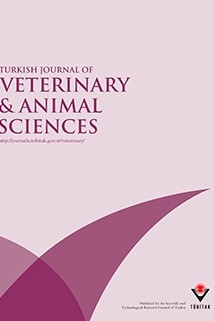
Turkish Journal of Veterinary and Animal Sciences
Yazarlar: Handan ÇETİNKAYA, Ayşen GARGILI, Kemal ALTAŞ
Konular:-
Anahtar Kelimeler:Microwave cooking,Toxocara canis,Infectivity
Özet: This study was conducted to determine the effect of microwave cooking on the infective stages of Toxocara canis larvae found in the tissues of paratenic hosts. For this purpose, 3 series of experiments were carried out using a household microwave oven (2450 MHz, model: Arçelik MD551) at medium, medium-high and high levels. A total of 54 mice were used in the 3 experiments. Toxocara canis eggs were collected from the faeces of naturally infected dogs and incubated at room temperature for 4 weeks for development of infective larvae in eggs. In the first experiment, 6 mice were each infected with 3000 larvated eggs of T. canis orally. Infected mice were sacrificed on the second day of infection and each liver was taken out, minced with a scalpel, mixed to provide homogeneity and separated into 3 equal parts after weighing. All mice livers weighed approximately 1 g. One-third of each liver was given to one mouse raw and another third of each liver was digested in a 1% pepsin-HCl solution at 37 °C for 3 days to search for T. canis larvae. The remaining thirds of the livers were fed to one mouse after microwave cooking at medium level for 5 min. Since the mice livers were so small they were covered with stretch cooking film and put inside chicken livers (each approximately 52 g, 1.7 cm thick) to obtain a normal sized cooking sample before microwave treatment. Samples were put inside the microwave oven in the centre and cooked separately. Then the livers were taken out of the oven and the temperature inside the liver was measured immediately. The mice fed on raw liver and microwave-treated liver were sacrificed after 2 days. The lungs, livers, carcasses, hearts, spleens and kidneys of each mouse were put into pepsin-HCl digestion solution and examined for T. canis larvae under a stereomicroscope. The second and third series of experiments were carried out just like the first experiment except for the cooking levels of the microwave, which were medium-high and high. Various numbers of larvae were found in the organs of mice fed uncooked infected liver, but no larvae were found in the mice fed microwave-processed infected livers.